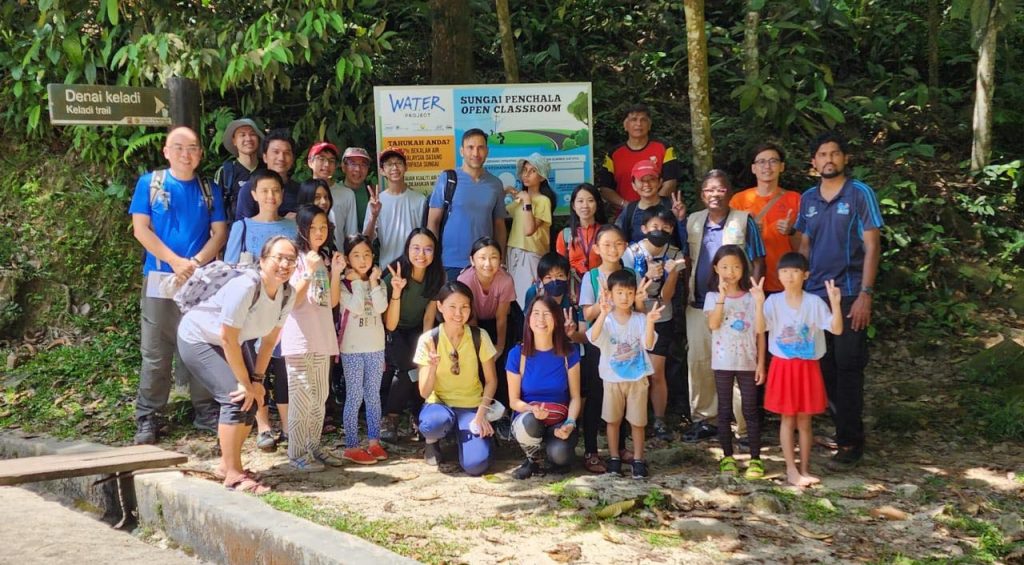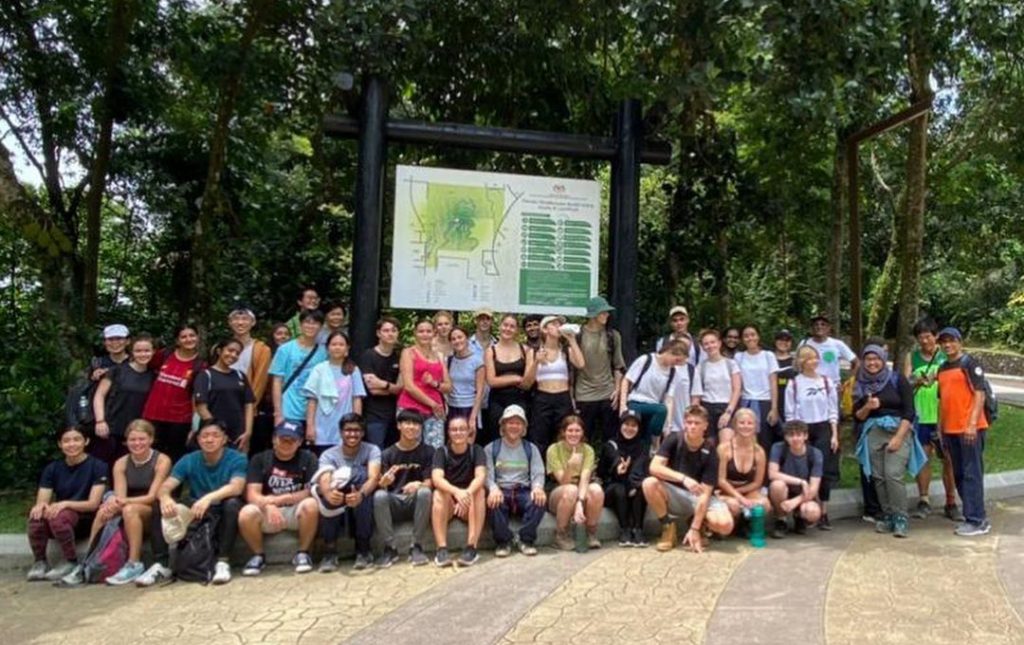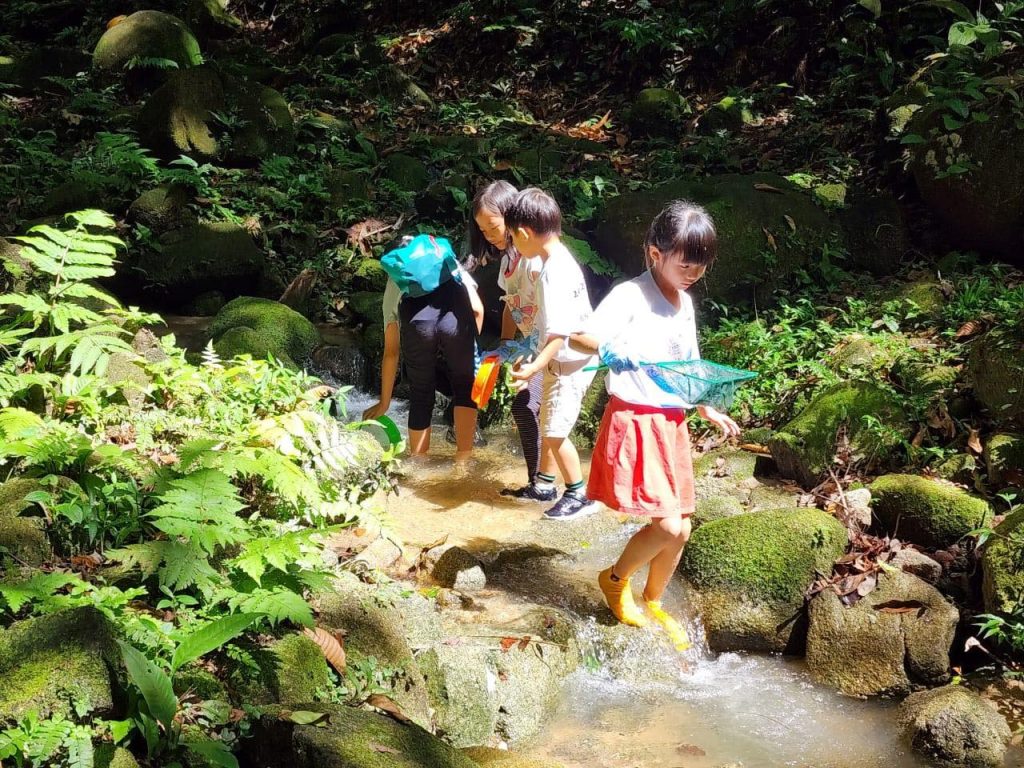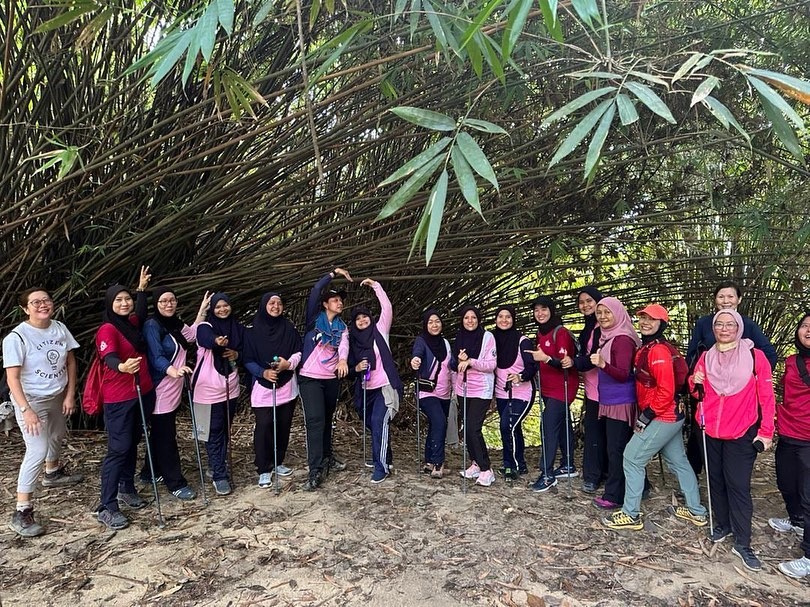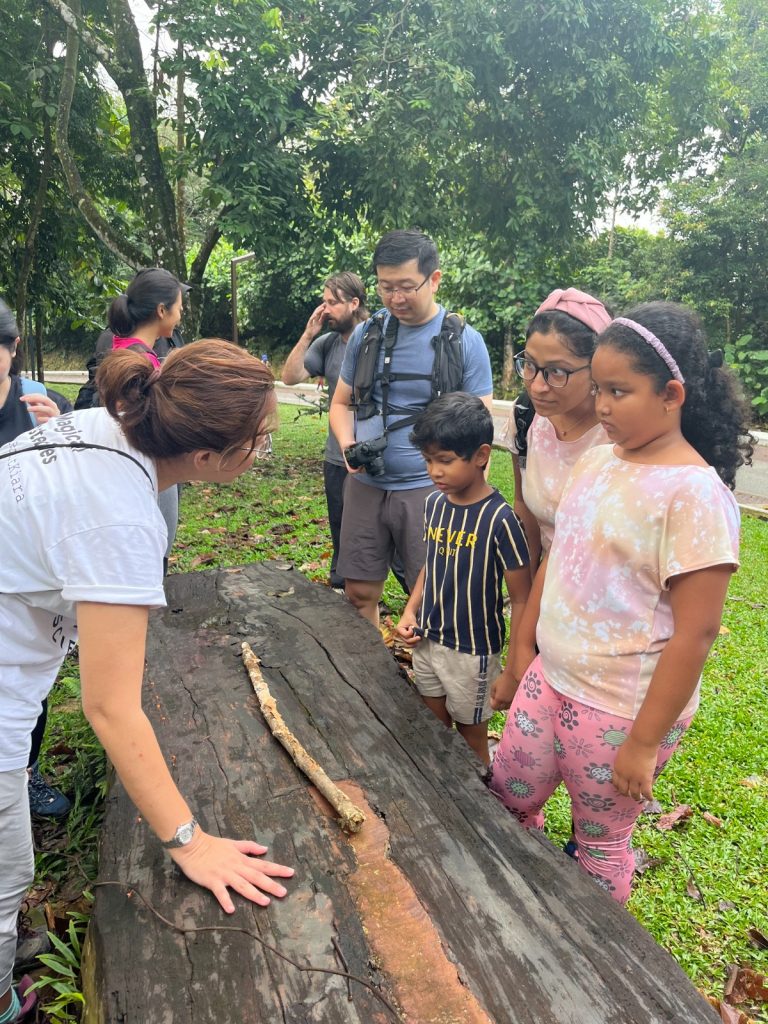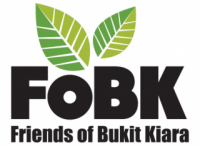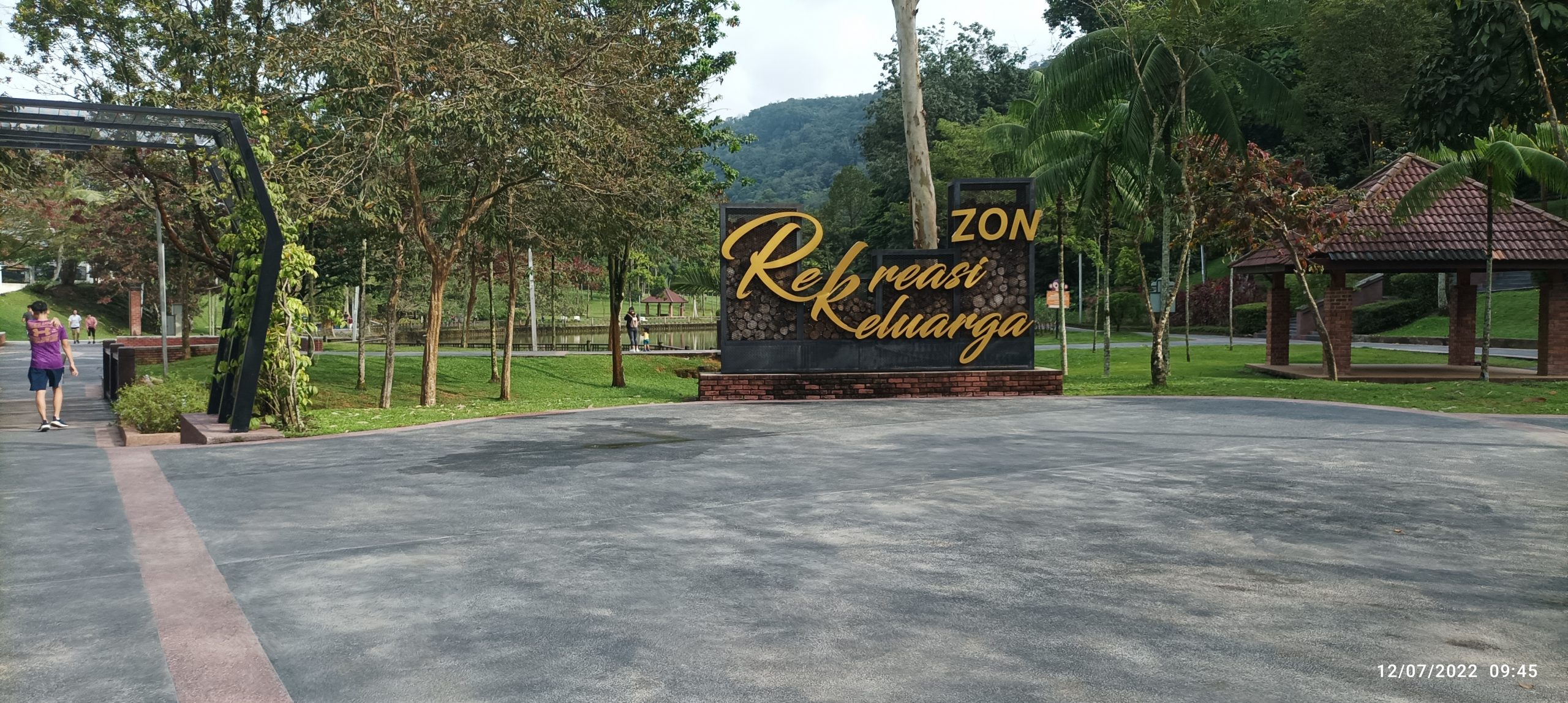- Geographic Setting
- History & Background
- Bukit Kiara Federal Park
- Ecosystem Services
- Map of Bukit Kiara
- People & Activities
Geographic Settings of Bukit Kiara
Bukit Kiara is a small, low-lying hill that runs on a north-south axis, from Kepong in the north to Taman Rimba Kiara in the south. Bukit Sri Bintang, another popular hiking destination is essentially the northern spur of the Kiara hill (though fragmented following the construction of the North-South Expressway).
The western flank of Bukit Kiara overlooks the township of Taman Tun Dr. Ismail and Kampung Sungai Penchala whereas to the east, its foothills meet Kampung Segambut Dalam, Mont Kiara and Sri Hartamas.
A highway, the Penchala Link passes through the middle of the hill. Fortunately, the highway developers managed to keep Bukit Kiara intact, by building a 700-metre-long tunnel through the foot of the hill — a great example of how engineering solutions can be employed to prevent forest fragmentation.
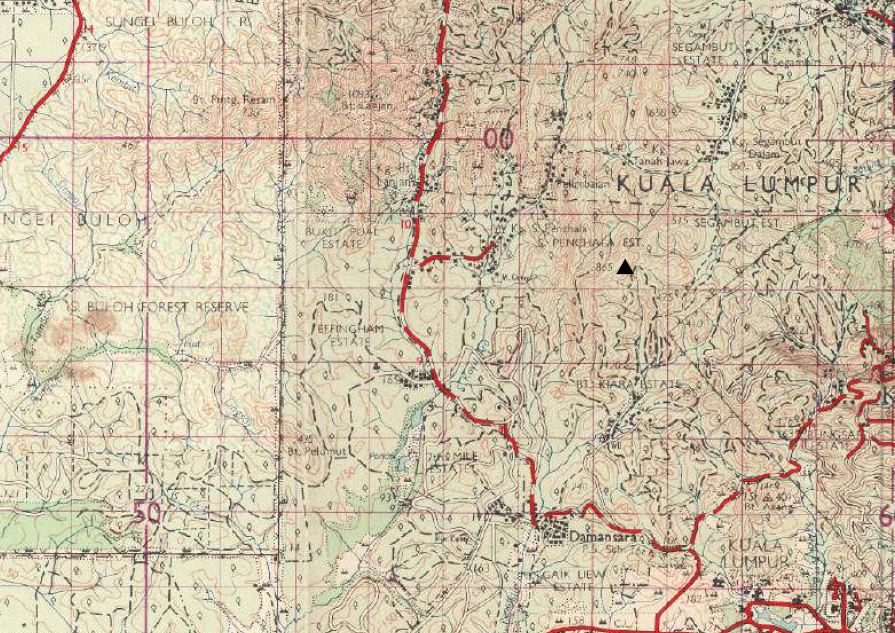
Map source: Director of National Mapping, Malaysia
The hill’s highest elevation is given as 865 ft (264 m) above sea level in old topographic maps, and slightly higher at 270 m on OpenStreetMap.
More importantly, however, it forms the catchment of three tributaries of the Klang river (the headwaters of Sungai Penchala originate from its southern sections, while some tributaries of Sungai Kayu Ara and Sungai Teba (a branch of Sg. Kroh) originate from its north-western and north-eastern sectors respectively.
The southern half of the hill, including the adjacent flatlands towards the southeast was formerly occupied by the Bukit Kiara Rubber Estate that was established by a British planting syndicate at around the beginning of the 20th century and subsequently bought over by a local company, Ng Chin Siu & Sons.
The Bukit Kiara Federal Park (Taman Persekutuan Bukit Kiara) is located within the north-western quadrant of that former estate.
Brief History of Bukit Kiara
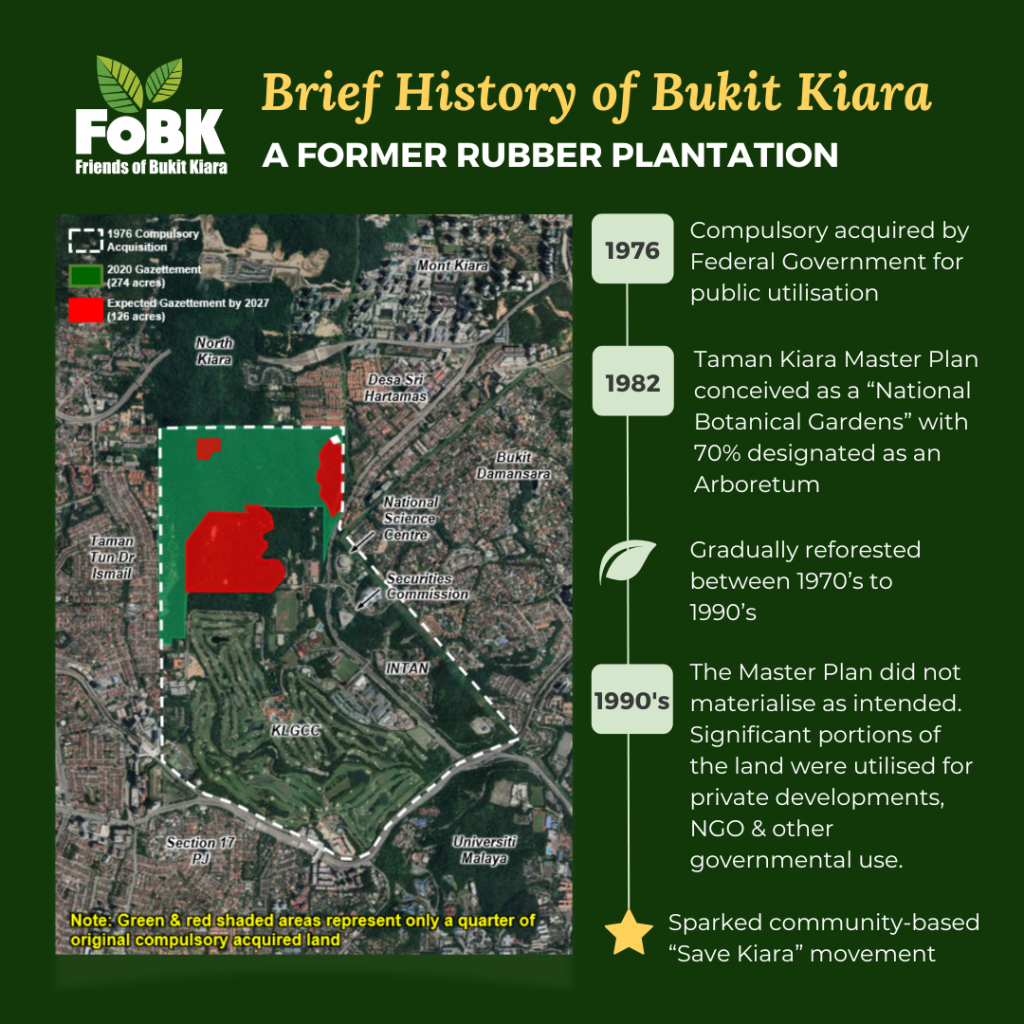
Bukit Kiara Estate was the first of three rubber estates that were compulsorily acquired by the Federal Government following the creation of the Federal Territory of Kuala Lumpur in 1974. While the other two acquisitions — the Hawthornden estate (now Wangsa Maju) and the Bukit Jalil estate (now Bukit Jalil) — were made to accommodate urban population expansion, the overriding objective of the Bukit Kiara Estate acquisition was for public purpose.
Forty-nine million Ringgit (RM49 million) of public funds was spent to acquire Bukit Kiara Estate from Ng Chin Siu & Sons plus a few adjacent smallholdings; 1,534 acres in total. A portion of the land was set aside for a National Institute of Public Administration (INTAN), National Science Centre and other public institutions and facilities. Dewan Bandaraya Kuala Lumpur (DBKL) then commissioned world-renowned landscape architect firm Royston Hanamoto Alley & Abey to develop a master plan for the remaining area. The resultant 1982 Taman Kiara Master Plan conceived a “National Botanical Gardens” comprised of a 650-acre arboretum in the north, which would merge into a park-like National Mausoleum and public golf course in the south.
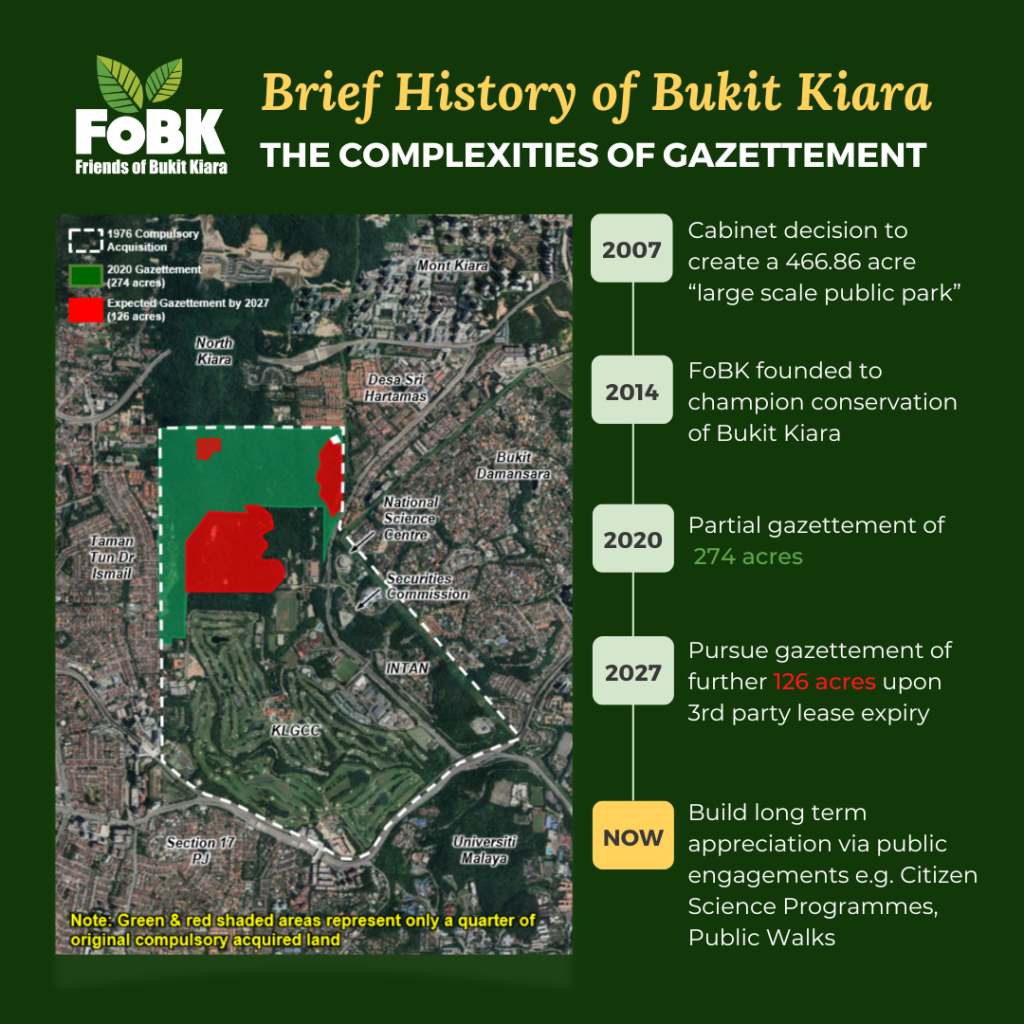
Against a backdrop of rapid economic growth of the early 1990s, the implementation of the Master Plan did not go according to plan. A significant portion of the area that was zoned for public purpose fell into private hands. It was this loss of public land that sowed the seeds of activism within the local community; a movement that was initially led by the Taman Tun Dr. Ismail Residents’ Association. The Friends of Bukit Kiara (FoBK), which was registered as a Society in 2014, has been at the forefront of the Save Bukit Kiara movement since 2001 when it began as a coalition of Residents’ Associations from across the KL-PJ conurbation.
Two major milestones have been achieved in our conservation journey thus far.
- The first was a Federal Cabinet decision in June 2007 to create a 466.86-acre “large-scale public park” at Bukit Kiara.
- The second was the (partial) implementation of the said decision in July 2020, via the gazettement of approximately 274 acres as “Bukit Kiara Federal Park” under the National Land Code 1965.

Today, the Bukit Kiara Federal Park, which has been managed by the National Landscape Department since 2010, spans 400 acres — less than the 466.86 acres that was announced in It is now known, after many years of fact finding and discovery, that at the time the decision to gazette the “large-scale public park” was announced in June 2007, around 170 acres of the area was already compromised by deals made prior — of which 60-plus acres was unsalvageable. This is the reason that the Bukit Kiara Federal Park is now 400 acres; comprising the 274-acre gazetted portion plus a further 126 acres that has yet to be gazetted, due to legal encumbrances set to expire by 2027.
Origins of The Name Kiara & Penchala
Kiara
Not much is known about how the hill that we now call Bukit Kiara got its name. What is clear is that “Kiara” was the name adopted by the British planters who developed the Bukit Kiara Rubber Estate at the turn of the 19th century.
It may be possible that the name for the estate was imported from beyond the shores of Malaya, for “Kiara” is present in a remarkably diverse range of languages including Irish (Ciara), Korean (키아라), Hindi (कीअरा) and Italian (Chiara). Oddly enough, the word is generally related to either light or darkness in most of these languages.
Apart from the estate, there is no peak or stream named “Kiara”, nor is the word found in Bahasa Malaysia or the local Temuan language. It could be, however, that “Kiara” is an anglicization of the Malay words kayu (wood) and ara (fig), which when used together, refers to the fig tree (pokok kayu ara) — an important keystone species of the rainforest, and Bukit Kiara.
This explanation is perhaps the more plausible of the two, considering that the northwestern section of Bukit Kiara forms part of the catchment of the river named Sungai Kayu Ara. Regardless, “Kiara” today is a highly marketable name for residential properties located far beyond its original place.
Penchala
According to oral tradition passed down by community elders, the ancestors of the indigenous Temuan Orang Asli community of Bukit Lanjan (who were resettled at Desa Temuan when Damansara Perdana was built in 2002) lived on Bukit Kiara a long time ago. They called the hill “Bukit Pencalak”. They hunted and gathered, and planted durian and other fruit trees in the forest around their village.
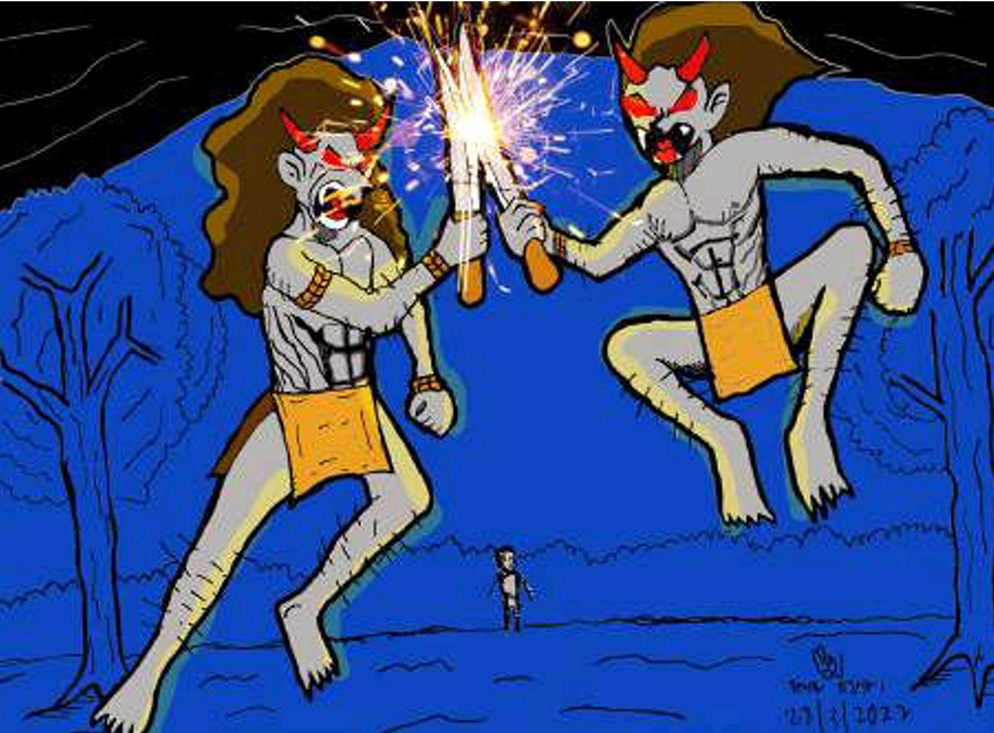
As the story goes, two supernatural beings (Djinn) also lived on Bukit Pencalak. The warring Djinn — big, scary creatures with horns, red eyes and long fingernails — would often fight each other in the dark of night. When they fought, all that the villagers could see were the sparks flying from their parangs (machetes), like glowing embers of a fire. Pencalak is an old Temuan word for “spark”.
In any case, the Temuan eventually left Bukit Pencalak, as too many villagers had gone missing, one by one, under mysterious circumstances. They migrated to another hill a short distance away, across the Sungai Kayu Ara valley. They called their new home Bukit Lanjan, after a noteworthy incident where a tiger was seen clawing on a rock at the foot of the hill. Lanjan in the Temuan language means “to scratch”.
Bukit Kiara Federal Park
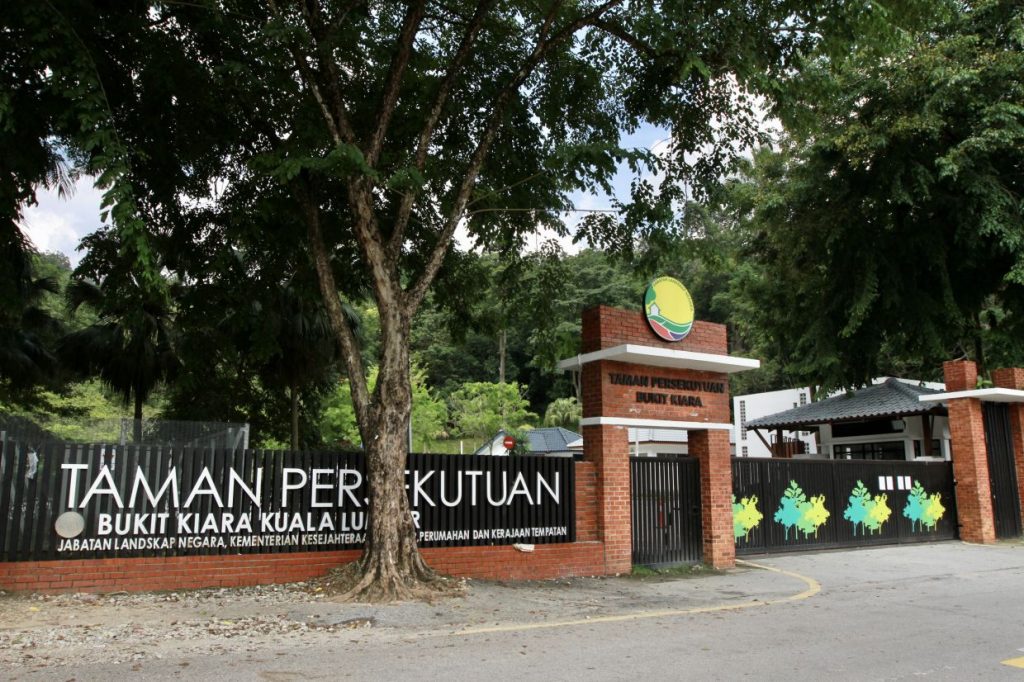
Bukit Kiara Federal Park, Kuala Lumpur. LOW LAY PHON/The Star
The Bukit Kiara Federal Park or Taman Persekutuan Bukit Kiara (TPBK), which has been managed by the National Landscape Department since 2010, consists of two main sections — the Family Recreation Zone (Taman Lembah Kiara) and the Arboretum Zone. This subset comprises 400 acres of the larger Bukit Kiara footprint.
Family Recreation Zone (Taman Lembah Kiara)
Located at the southwestern foot of Bukit Kiara. Taman Lembah Kiara is a landscaped park with manicured lawns shaded by an eclectic mix of interesting trees and an invitingly clear stream that flows through it.
Facilities that include a network of paved tracks as well as a children’s playground, fitness stations, gazebos and multipurpose open areas, make this beautiful park suitable for the entire family.
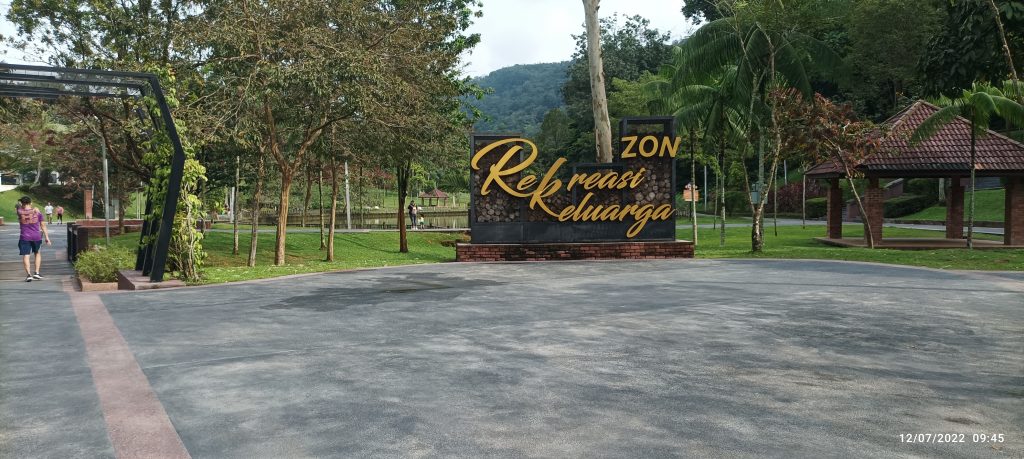
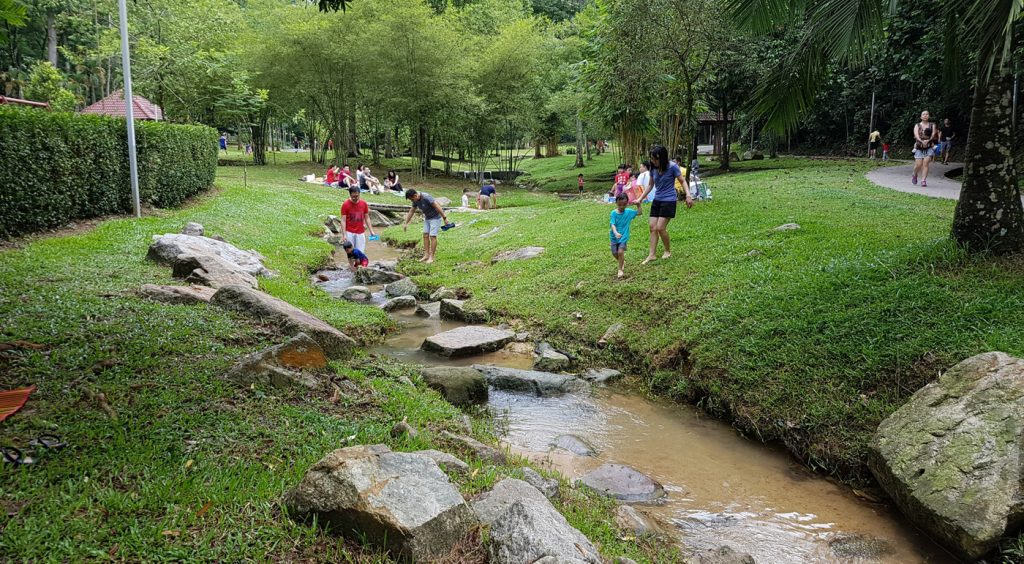
Arboretum Zone
The Arboretum Zone encompasses the bulk (around 65 per cent) of Bukit Kiara Federal Park. Most park users may be familiar with the common meeting point of the guardhouse located at Changkat Abang Haji Openg. Walkers up the tarmac road will be able to enjoy an approximate 4km loop that is moderately challenging. But off-road lies a great many trails to be discovered and explored.
Being a former rubber estate, the natural forest regeneration process has been aided by various tree planting efforts over the years. The National Landscape Department in particular has planted thousands of saplings of rainforest species, in its effort to transform the former estate into an arboretum – a large garden where many types of trees are grown for study or pleasure.

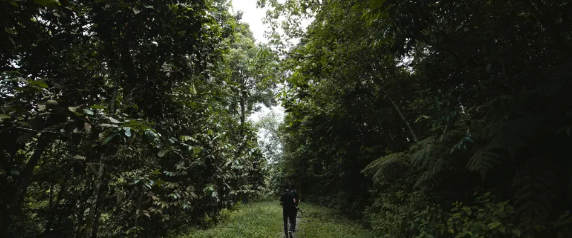
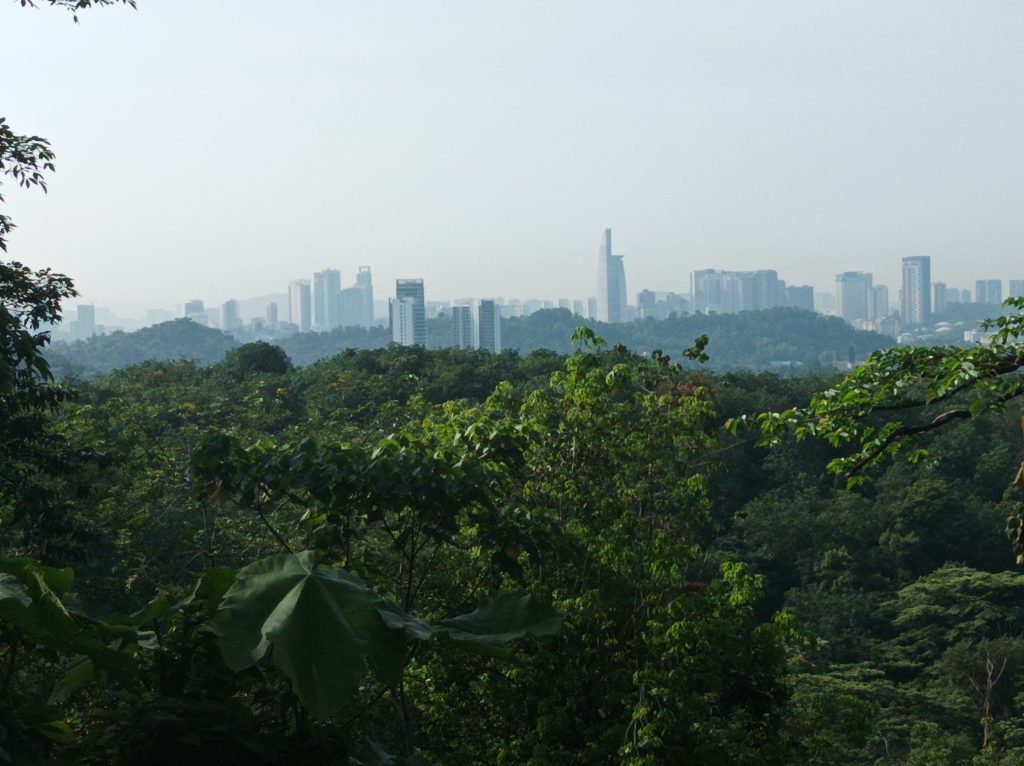
Ecosystem Services
From an ecosystem perspective, Bukit Kiara is not just the Federal Park alone, since biodiversity and ecosystem services don’t follow legal or administrative boundaries. The privately-owned adjacent land parcels that are still under vegetation cover also constitute a part of the Bukit Kiara ecosystem. Their importance in safeguarding the integrity of the forest and in ensuring the continued provision of ecosystem services that Bukit Kiara provides to the surrounding townships cannot be overstated.
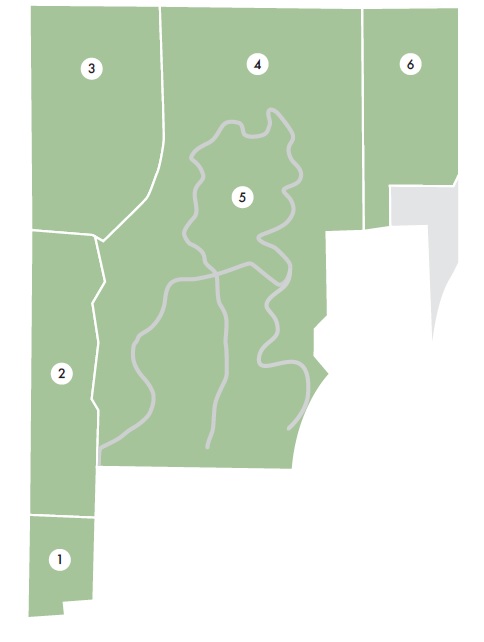
with grey insertions cross-referenced to the Bukit Kiara Federal Park
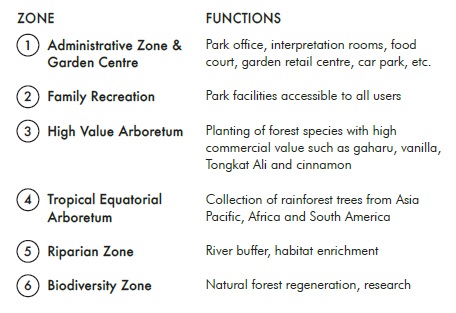
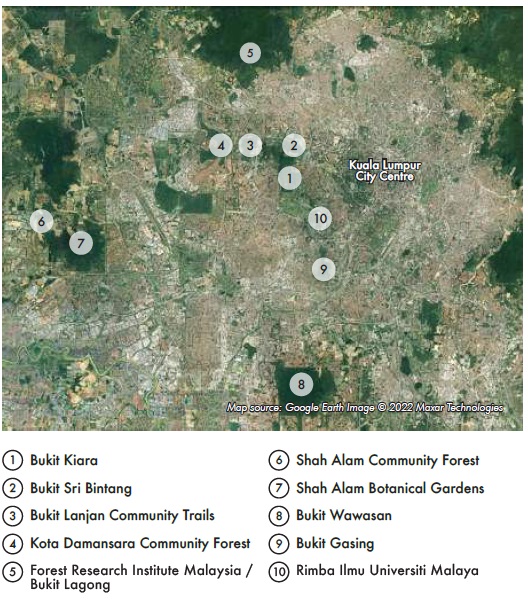
Bukit Kiara (and all other urban green lungs that are in good condition) provides a number of ecosystem services, that are essentially nature-based solutions to many man-made environmental issues that we face today. These ecosystem services are often undervalued by society , since nature does not change. All it takes is for us to take care of nature, and it will reciprocate many fold.
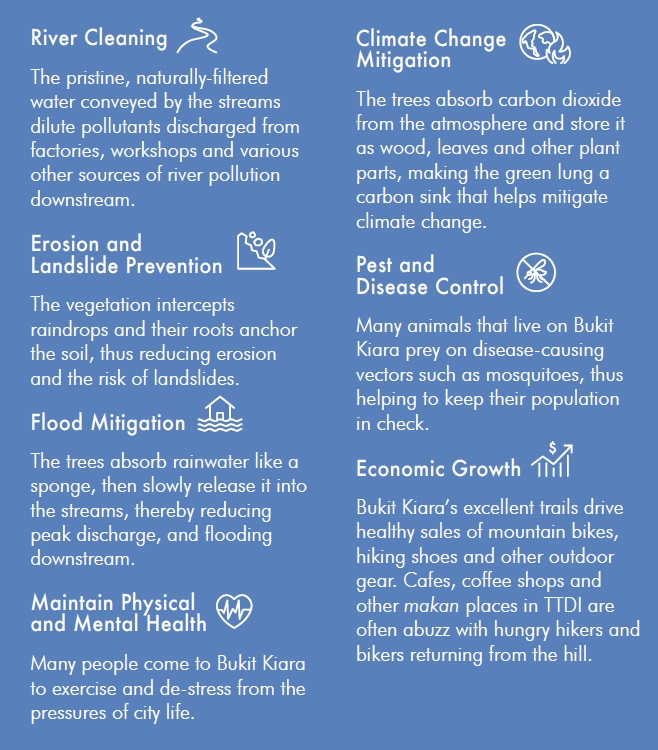
Map of trails and landmarks of Bukit Kiara
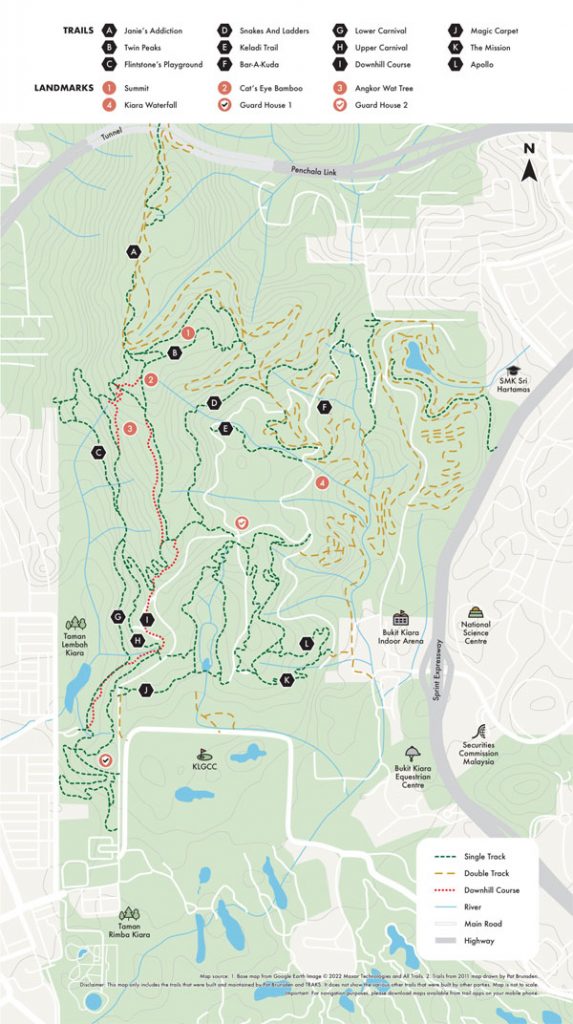
People & Activities
